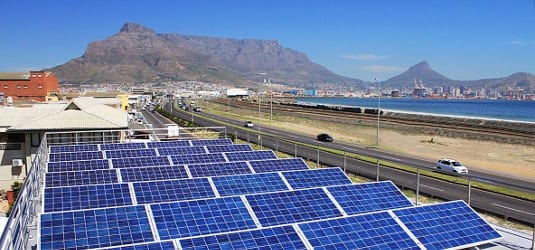China connected over 5GW of solar power to the grid in the first quarter of the year, according to a statement from the National Energy Administration (NEA) earlier this week. About 4.4GW were utility-scale plants while distribution-grid-connected projects accounted for the rest.
The Asian nation now has 33GW of solar power supply and aims to add 17.8GW of solar power this year – more than double the capacity installed by the US in 2014.
The northwestern region of Xinjiang led the effort, with 1.1GW of new PV plants in the first three months of the year, followed by Inner Mongolia, Zhejiang, Gansu and Jiangsu.
Even as solar power installations are increasing in scope and scale – China Minsheng said it had started construction of a 2GW plant involving investment of CNY 15bn ($2.4bn) in the Ningxia region in northern China earlier this week – there are some concerns about the quality of the plants. The NEA called for a nationwide check on solar power projects. Local governments are required to report inspection results by July.
The Chinese government is also working on restructuring the energy sector to encourage more private investment and allow the market to set electricity prices. Bloomberg New Energy Finance has analysed the electricity market reform plan and looked at how it would impact the $2 trillion investment expected in the sector over the next 15 years. In the long term, the changes are expected to reduce the curtailment of renewables and increase their competitiveness.
There were some big numbers coming out of Japan too. The Ministry of Economy, Trade and Industry had approved more than 75GW of clean energy projects by end-January, of which almost 72GW are solar. Actual solar installations since the beginning of the incentive programme in July 2012 totalled 15GW by end-December.
Another country seeing significant build-out is South Africa, which plans to buy an additional 6.3GW from private producers through its auction programme. It also announced the preferred bidders for 13 clean energy projects adding up to 1.1GW of capacity last week. Scatec Solar, Biotherm Energy, Sappi, Sun Edison and Enel Green Power were among the companies provisionally selected to build solar, wind, biomass and hydroelectric plants. Financing for the projects is to be completed by the fourth quarter, with commissioning due to start in November 2016.
“This brings it to a total of 79 projects approved by the Department of Energy, with a capacity of 5,243MW” in four of five bid rounds, energy minister Tina Joemat-Pettersson told reporters in Cape Town last week. “This represents a massive investment of ZAR 168bn ($14bn) in economic infrastructure in our country.”
Over in the US, Michael Picker, president of the California Public Utilities Commission said that the state grid could handle taking 100% of its supply from renewables, and meeting the goal for half that amount would be no problem. Governor Jerry Brown in January set a target of sourcing 50% of power supply from renewables by 2030.
“We could get to 100% renewables,” Picker said at the Bloomberg New Energy Finance Summit in New York last week. “Getting to 50% is not really a challenge.” Presentations made at the Summit by Al Gore, Ban Ki-moon, Michael Bloomberg and BNEF founder Michael Liebreich, are available here, while videos of the panel debates are on the BNEF client site here.
In Ontario, Premier Kathleen Wynne announced that her province would join Quebec, California and other North American jurisdictions in adopting a cap-and-trade approach to limiting greenhouse gas emissions. Ontario will join the Western Climate Initiative cap-and-trade system, impose a “hard ceiling on the pollution allowed in each sector of the economy,” and reward “innovative companies” by letting them profit by trading excess emission reductions, Wynne said in a statement.
A global climate agreement is set to be finalised at the Paris conference in December. Bloomberg New Energy Finance is running a series of reports focusing on various aspects of the agreement, such as finance and differentiation. Last week, the fourth report of the series titled Building Blocks of a post-2020 deal #4: adaptation was released.










